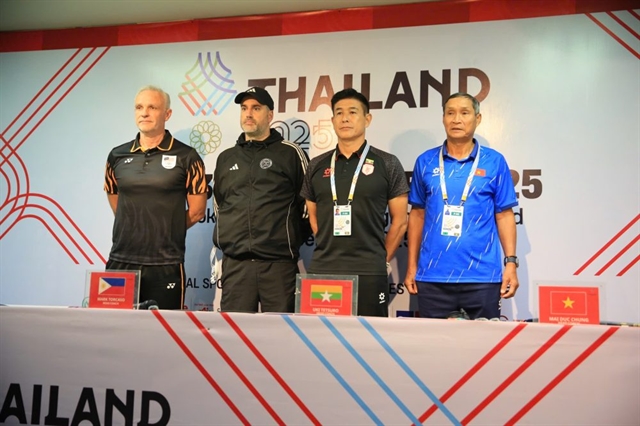 Society
Society

 |
| SIGNING UP: Students of Yên Hòa High School in Hà Nội volunteered to join the "Three Responsibilities" movement in 1965. VNA/VNS Photo Thanh Tụng |
The prideful history of Việt Nam has long been shaped by the services of women. Yet, no period witnessed their involvement in military activities as vibrantly and impactfully as in the anti-American war and the struggle to liberate the South.
Among the most iconic efforts was the Ba Đảm Đang (Three Responsibilities) movement, which began 60 years ago. It became a shining milestone in Việt Nam’s history, as women across the North took on household duties, economic production, and even combat roles when needed—making substantial contributions to the noble cause of national reunification.
An epic of commitment
In the mid-1960s, as the Sài Gòn army suffered great defeats, the United States increased its direct military involvement in Việt Nam by sending combat troops to the South, and expanded the air war of destruction to the North in an effort to block the liberation struggle of the Southern people.
The North responded with the appeal "All for the beloved South", sparking a mass mobilisation of volunteers eager to join the fight against the foreign aggression. As young men left for the southern front, the North became a massive rear base, where women were urged to take on key roles—sustaining economic production, managing family affairs, and fighting in case of need.
Women from all regions submitted voluntary applications to the People’s Committees [Administration] and the Việt Nam Women’s Union, requesting to take on more work usually held by men. They proudly shouldered both “national and household responsibilities”, allowing their husbands and sons to fight with peace of mind.
In this fervent atmosphere, the Standing Committee of the Central Việt Nam Women’s Union officially launched the “Three Responsibilities” movement on March 22, 1965. It called on women to assume production roles to replace men at war; manage household affairs and support loved ones in combat; and be ready to directly engage in combat or support roles when needed.
The movement quickly created an unprecedented wave of enthusiasm across the North. From villages to towns, from highland to delta regions, tens of millions of women joined the campaign.
On the production front, women worked tirelessly, undeterred by day or night or the threat of US bombings. Upholding the spirit of "rice fields are the battlefield, hoes and ploughs are weapons", farming women became "armed with plough and gun", taking over more men's heavy work and managing cooperatives.
In factories and construction sites, millions of women worked relentlessly. Hundreds of thousands of female workers sent their children to safer areas while staying behind to maintain production. Even during intensive American air bombardments, women kept factories running.
 |
| HARD AT WORK: Women of the Hà Nội-Huế-Sài Gòn Cooperative actively cultivate duckweed to enhance fertiliser sources for rice and vegetable planting in 1968. — VNA/VNS Photo Phạm Văn Kính |
Many factories with predominantly female workforce met or exceeded their production targets for five to twelve consecutive years. Among those honoured for their achievements were the spinning team at the Nam Định Textile Factory and Labour Hero Cù Thị Hậu of the 8/3 Textile Factory.
Despite raising two young children alone while her husband fought in the battlefield, Hậu maintained the highest average daily output at the factory for eight years running. Over nine years, the factory exceeded its fabric production plan by more than 80,000 metres.
Women also left their mark in healthcare, education, commerce, and the arts. Representing nearly 60 per cent of labour in the health sector, women helped build a nationwide healthcare network, establish clinics and maternity homes, care for war victims, and live up to the motto “A medical worker is like a caring mother”.
In education, women made up 52 per cent of the workforce. They helped build schools, dug air raid shelters, and ensured nearly five million students could continue learning in wartime. At the same time, they remained devoted wives and mothers, raising children, caring for elderly parents, and maintaining homes with unwavering resolve.
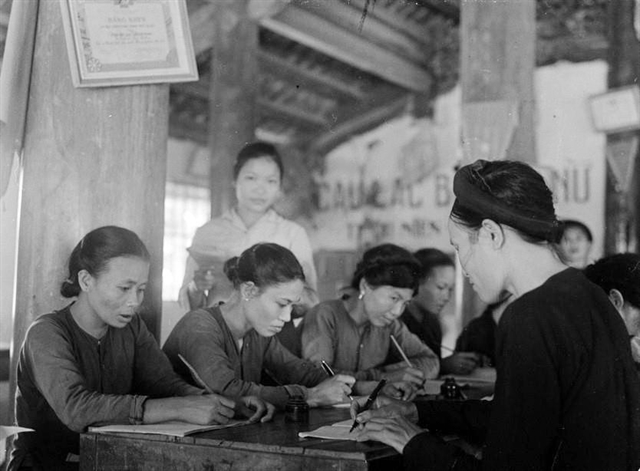 |
| STUDY TIME: The Kiều Mai Agriculture Cooperative in Phú Diễn Commune, Từ Liêm District, Hà Nội, opened a class to enhance the cultural level for women in 1967. — VNA/VNS Photo Thế Trung |
By the end of May 1965—just two months after the campaign launch—more than 1.7 million women across the North had registered to strive for the title of “Three Responsibilities Women". Tens of thousands of young women joined militia units, youth volunteer teams, and labour battalions, directly contributing to combat and combat support missions with remarkable success.
During the 1966 celebration of the Việt Nam Women’s Union’s founding, President Hồ Chí Minh called the Three Responsibilities movement “a fervent and widespread patriotic movement” that united countless women in production, combat support, and even direct fighting roles in the struggle for liberation of the South.
“Thus, throughout history, from North to South, from young to old, Vietnamese women have truly been heroines,” the President said.
Never before had women received such honour. By 1971, North Vietnamese authorities conferred the title "Hero" to 42 outstanding women and 13 collectives, and over three million women were honoured as “Three Responsibilities Women”.
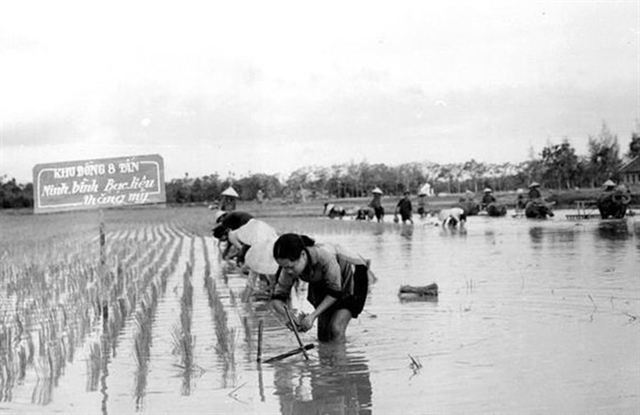 |
| HARVEST SEASON: Women of the Ngô Đồng Agriculture Cooperative in Gia Viễn District, Ninh Bình Province, take part in a rice transplanting contest to increase productivity in 1970. VNA/VNS Photo Thái Khải |
Iconic figures such as Mother Nguyễn Thị Suốt, Hero Trần Thị Lý, Hero La Thị Tám, and Labour Hero Cù Thị Hậu embodied the spirit of the times. The movement also helped nurture a new generation of female leaders, both in numbers and in quality.
Soaring into a new era
Today, Vietnamese women carry forward the legacy of the Three Responsibilities movement in a new context, continuing to make significant contributions to national development.
In politics, women are increasingly active. The number of female deputies to the National Assembly rose from 18 per cent during 1986–1991 to 30.26 per cent during 2021–2025, surpassing the global average and leading Southeast Asia.
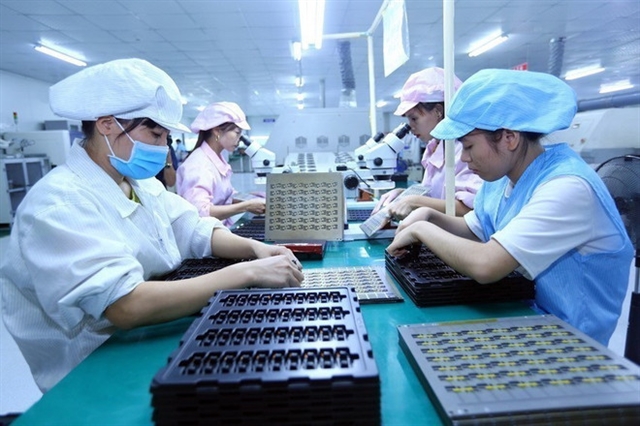 |
| MODERN ROLES: Women are increasingly participating in various production fields and playing important roles. — VNA/VNS Photo |
Việt Nam ranks among the top 10 countries for implementing Goal 5 of the UN’s Sustainable Development Goals on gender equality and women’s empowerment. In 2024, the country ranked 72nd out of 146 countries—an 11-place improvement since 2022.
Việt Nam was elected by the United Nations Economic and Social Council to the Executive Board of UN Women for the 2025–2027 term on April 9, 2024.
In the economy, Việt Nam has one of the world’s highest rates of female labour force participation, with women comprising more than 46.7 per cent of the workforce. They work across all sectors—from agriculture and industry to services, finance, and high technology.
Women are also increasingly present in management. A 2024 report showed that about 30 per cent of leadership positions in businesses are held by women, placing Việt Nam sixth globally in this regard, and the only Asian nation in the top 10.
Women continue to preserve and promote Vietnamese culture, maintaining traditional cuisine, folk arts, and national identity, while raising the next generation with pride. Many female scientists have achieved practical, impactful research outcomes.
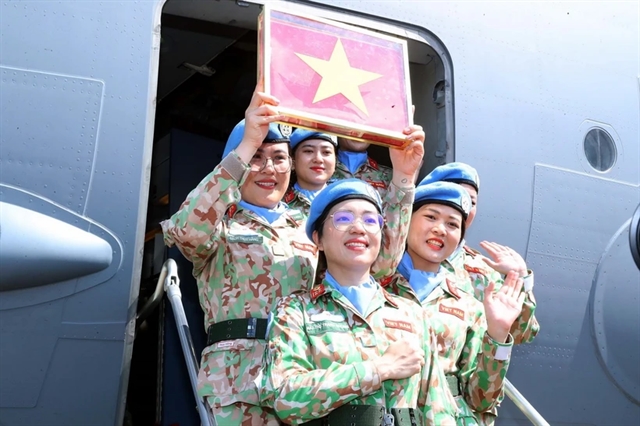 |
| SOLDIERING ON: The female officers of Field Hospital 6 set out on a mission. — VNA/VNS Photo Trọng Đức |
Vietnamese women have also made their mark on the global stage. Their participation in UN peacekeeping missions has enhanced Việt Nam’s international reputation.
Vietnamese women embody resilience, intelligence, and creativity. They continue to play a crucial role in building a strong, prosperous Việt Nam that is deeply integrated with the world—reflecting President Hồ Chí Minh’s praise: “The beautiful landscape of Việt Nam is woven and embroidered by the efforts of women, both young and old, making it even more splendid.” VNS


